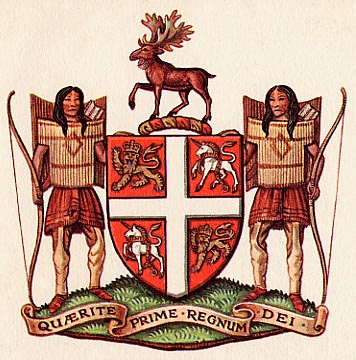
History

 |
Newfoundland History |
 |
Newfoundland History
The Labrador Boundary Issue (1927)
[This text was published in 1950. For the full citation, see the end of the document. Links and parts in brackets [...] have been added by Claude Bélanger. Interesting elements of Labrador history are discussed at this site.]
The fishing grounds off the Labrador coast, which are a natural extension of those off the coast of Newfoundland, have been fished from Newfoundland from earliest times. For this reason the administration of Labrador was first entrusted in 1763 to the Governor of Newfoundland. However, in 1774, Labrador was transferred to Quebec by the Quebec Act, only to be re-transferred to Newfoundland in 1809.
The British North America (Seignorial Rights) Act of 1825 again transferred to Quebec the portion of the coast west of a line drawn due north from the Harbour of Anse Sablon, since Quebec fishermen plied this area of the coast. Generally speaking these various Acts were concerned primarily with jurisdiction over actual coastal areas, no attempt being made to define the inland boundaries of the area. The question of the exact location of the inland boundary between Labrador and Quebec was not raised until 1888, and no settlement was reached until 1927, after an agreed reference for arbitration to the Judicial Committee of the Privy Council. [see this site as well ]
In brief, Canada claimed that the "Coast of Labrador" as used in the various treaties, comprised, in its depth inland, "only so much of the land immediately abutting on the sea, above low-water mark, as was accessible and useful" to fishermen. Newfoundland claimed that the term included the area inland to the watershed of rivers draining eastward into the Atlantic .
The Judicial Committee found in the main in favour of Newfoundland's claim, ruling that the boundary was a line drawn due north from the Harbour of Anse Sablon as far as the fifty-second degree of north latitude, thence along that parallel to the River Romaine, and thence northward and westward to Cape Chidley along the crest of the watershed of rivers flowing into the Atlantic Ocean. Thus Newfoundland 's sovereignty was confirmed over an area of approximately 110,000 square miles of Labrador. [The Labrador boundary dispute is substantially documented at this address .]
Source: GOVERNMENT OF CANADA , Newfoundland. An Introduction to Canada's New Province, Published by authority of the Right Honourable C. D. HOWE, Minister of Trade and Commerce, prepared by the Department of External Affairs, in collaboration with the Dominion Bureau of Statistics, Ottawa, 1950, 142p., pp. 15-41.
© 2004 Claude Bélanger, Marianopolis College |